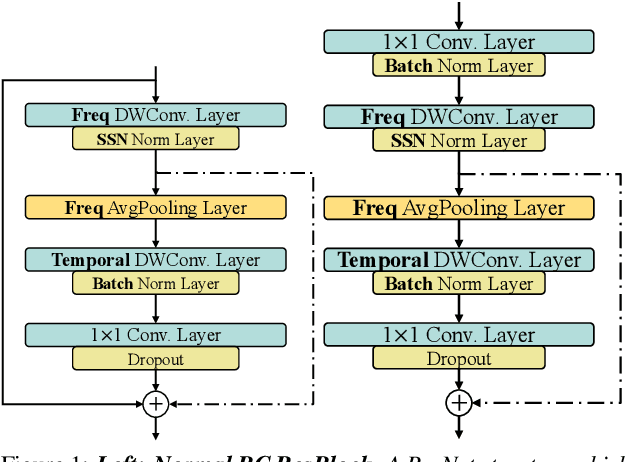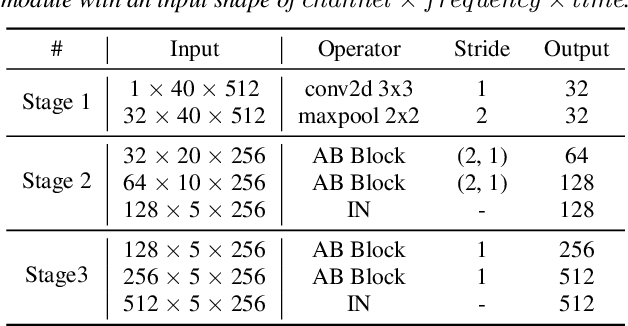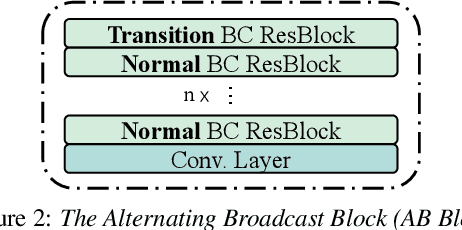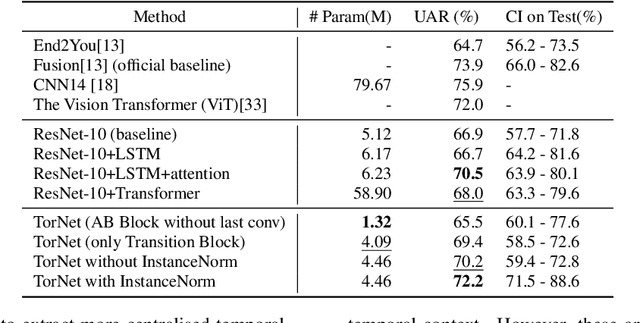A Temporal-oriented Broadcast ResNet for COVID-19 Detection
Paper and Code
Mar 31, 2022



Detecting COVID-19 from audio signals, such as breathing and coughing, can be used as a fast and efficient pre-testing method to reduce the virus transmission. Due to the promising results of deep learning networks in modelling time sequences, and since applications to rapidly identify COVID in-the-wild should require low computational effort, we present a temporal-oriented broadcasting residual learning method that achieves efficient computation and high accuracy with a small model size. Based on the EfficientNet architecture, our novel network, named Temporal-oriented ResNet~(TorNet), constitutes of a broadcasting learning block, i.e. the Alternating Broadcast (AB) Block, which contains several Broadcast Residual Blocks (BC ResBlocks) and a convolution layer. With the AB Block, the network obtains useful audio-temporal features and higher level embeddings effectively with much less computation than Recurrent Neural Networks~(RNNs), typically used to model temporal information. TorNet achieves 72.2% Unweighted Average Recall (UAR) on the INTERPSEECH 2021 Computational Paralinguistics Challenge COVID-19 cough Sub-Challenge, by this showing competitive results with a higher computational efficiency than other state-of-the-art alternatives.
 Add to Chrome
Add to Chrome Add to Firefox
Add to Firefox Add to Edge
Add to Edge